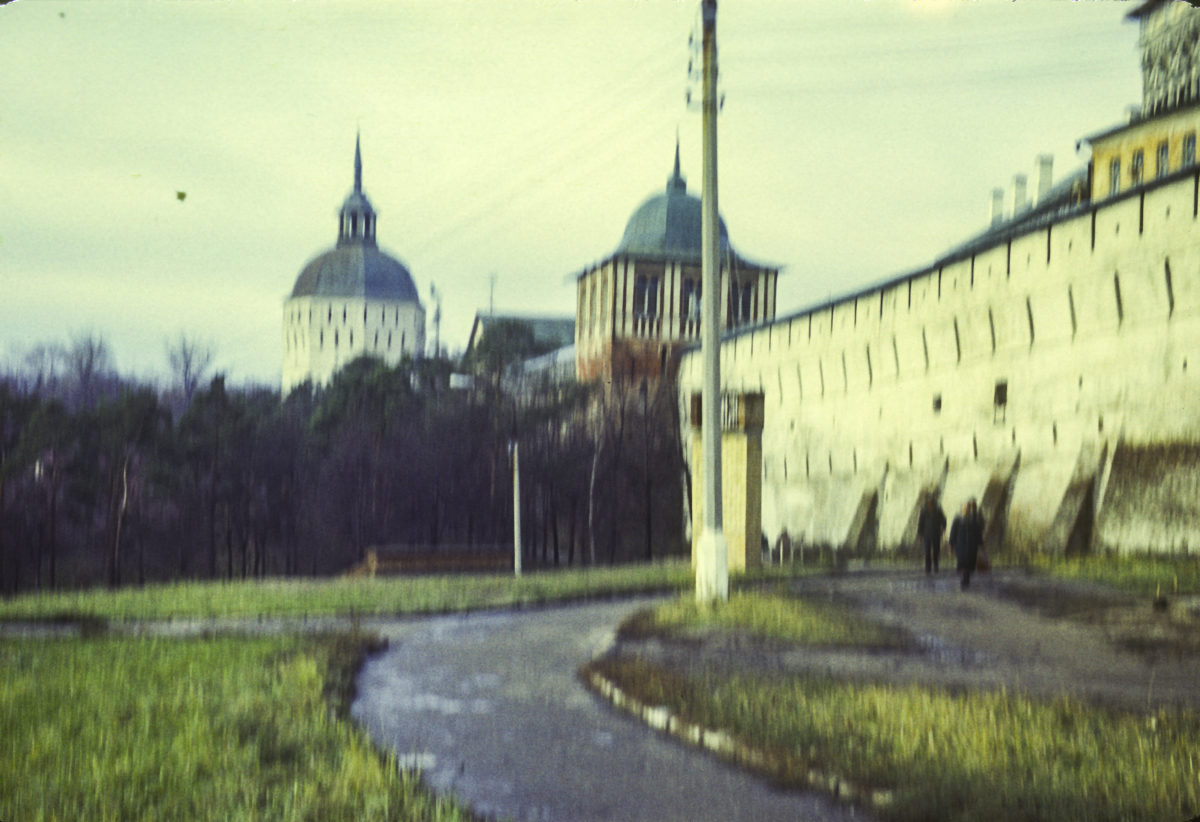In the fall of 1972 – I don’t remember what month it was exactly, but the leaves had all fallen from the trees and the days were growing very short – I went with my fellow American exchange students on our first trip outside Moscow. Our destination was the Trinity-St. Sergius Monastery, located about 70 kilometers from Moscow in a town then called Zagorsk. The pre-Revolutionary name of the town was Sergiev Posad. The Bolsheviks didn’t like this name because of its religious connotations, so they renamed it to Zagorsk to honor a revolutionary martyr named Vladimir Mikhailovich Zagorsky, who had served for one year as head of the Bolshevik Party in Moscow before being assassinated in September 1919. (After the collapse of the Soviet Union in 1991, the town reverted to its pre-Soviet name.)
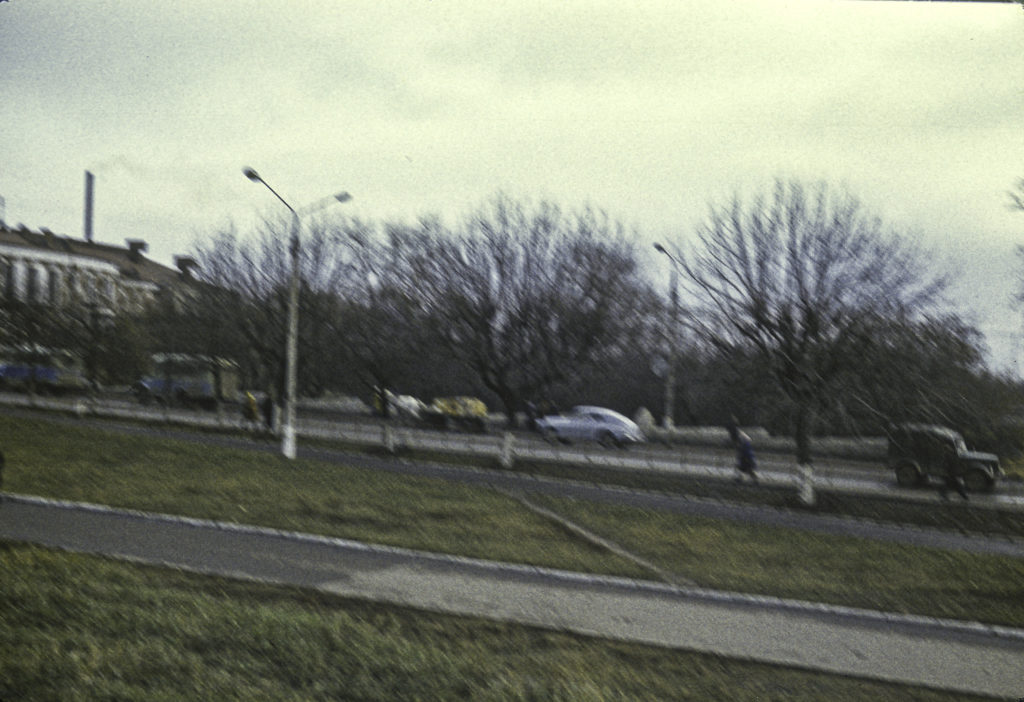
The Trinity-St. Sergius Monastery occupies a pre-eminent position among all the religious institutions of Russia. It was founded in 1337 by the monk St. Sergius of Radonezh (1314-1392), who became the patron saint of Muscovy in 1422. In that year also the wooden church that he built was replaced by a stone cathedral. A second cathedral was added in 1476, and a third was completed in 1584. In 1550 the wooden palisade walls were replaced by stone walls. This helped the monastery to survive the catastrophic years of the late 16th and early 17th centuries largely unscathed; it survived an 18-month siege by the Poles in 1608-10 and a shorter one in 1618. All the while the monastery continued to accumulate land and peasants, and it eventually became the wealthiest landlord in Russia.
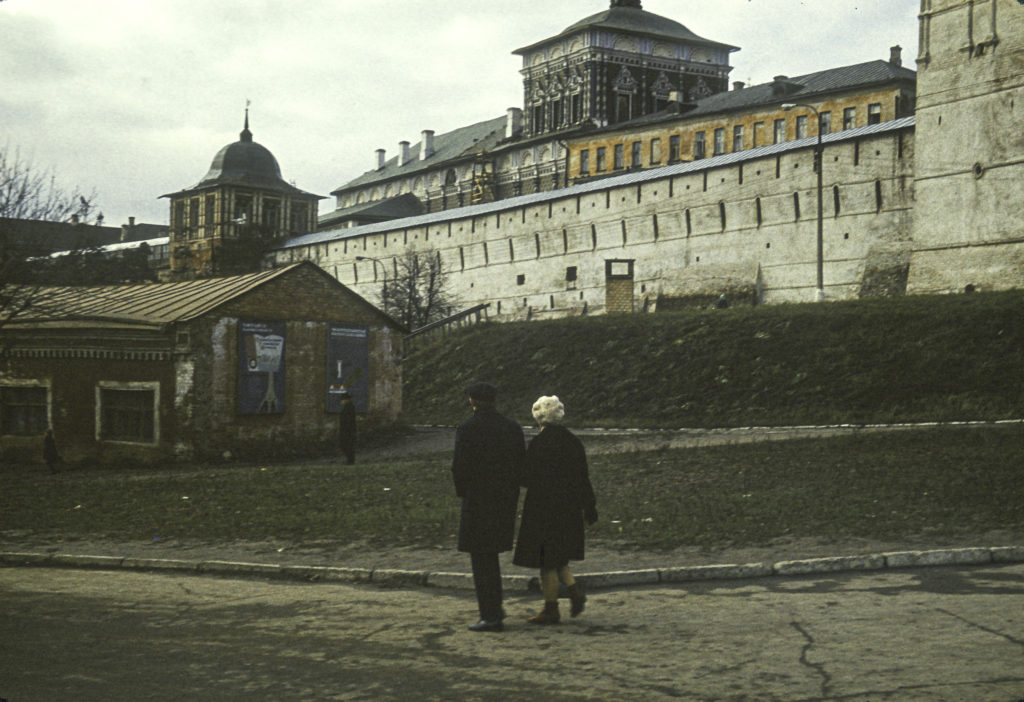
Tsar Peter the Great, in the days before he became great, used the monastery as a refuge when he was feared that the minions of his half-sister Sofia were coming after him.
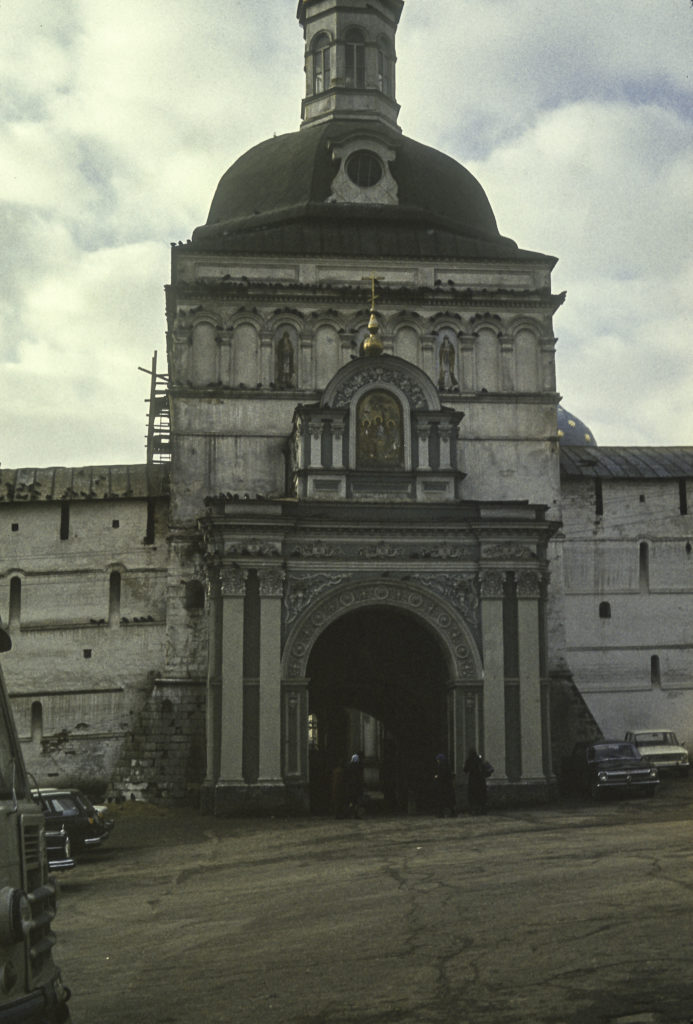
The walls of the monastery, which are 1.5 kilometers around, have twelve towers and four gates.
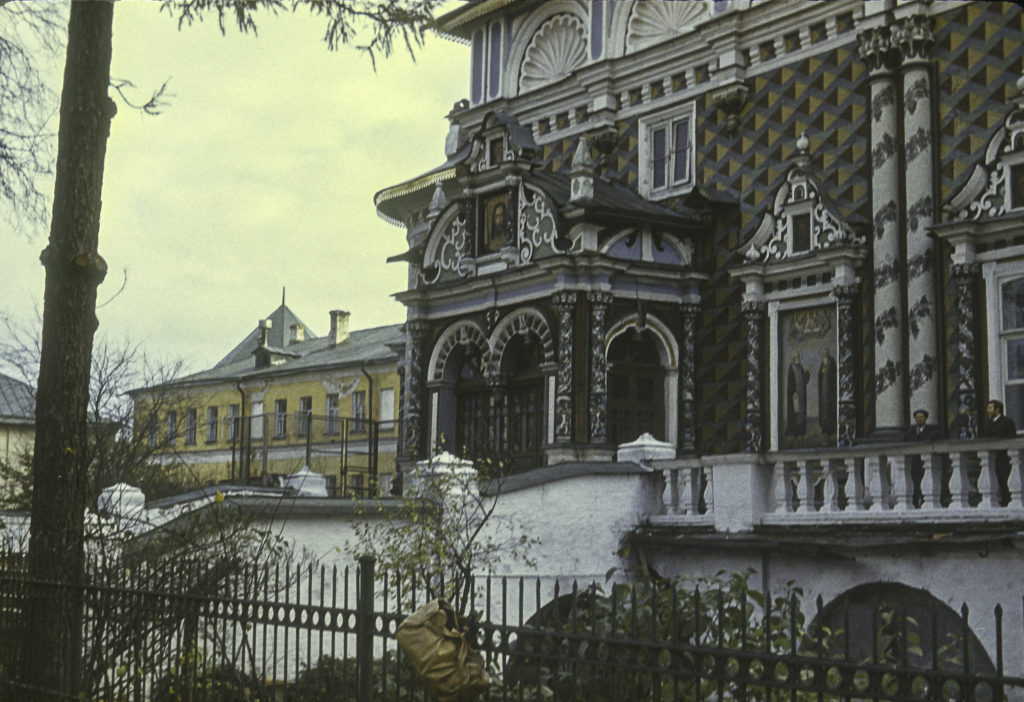
The first structure we encountered on entering the monastery was the huge Refectory, or dining hall. Built in the late 17th century, it occupies over 500 square meters and is painted in a striking checkerboard design.
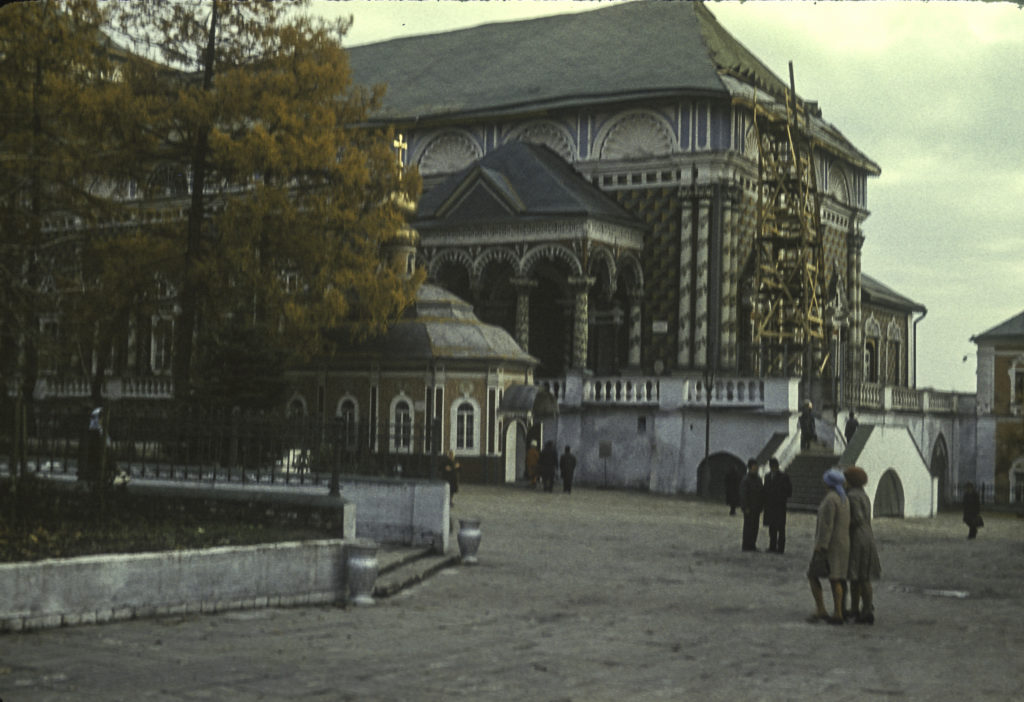
Proceeding further, we came to the imposing Annunciation Cathedral (Uspensky Sobor). (For those unfamiliar with the terminology, the Annunciation signifies the announcement of the Incarnation of Jesus to Mary by the angel Gabriel [Luke 1:26–38]). It is much larger than the Uspensky Sobor in the Moscow Kremlin.
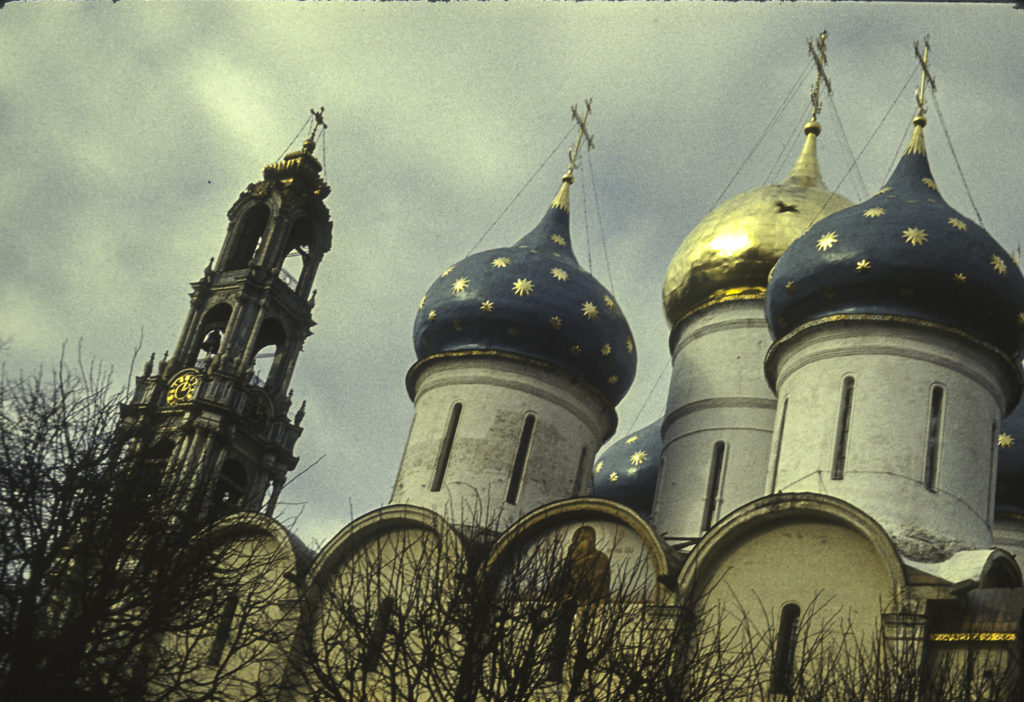
Ivan IV commissioned the Uspensky Sobor in 1559, but it was not completed until 1584 – 26 years later. It has a celebrated iconostasis featuring an icon of the Last Supper painted by Semen Ushakov, which is considered his masterpiece.
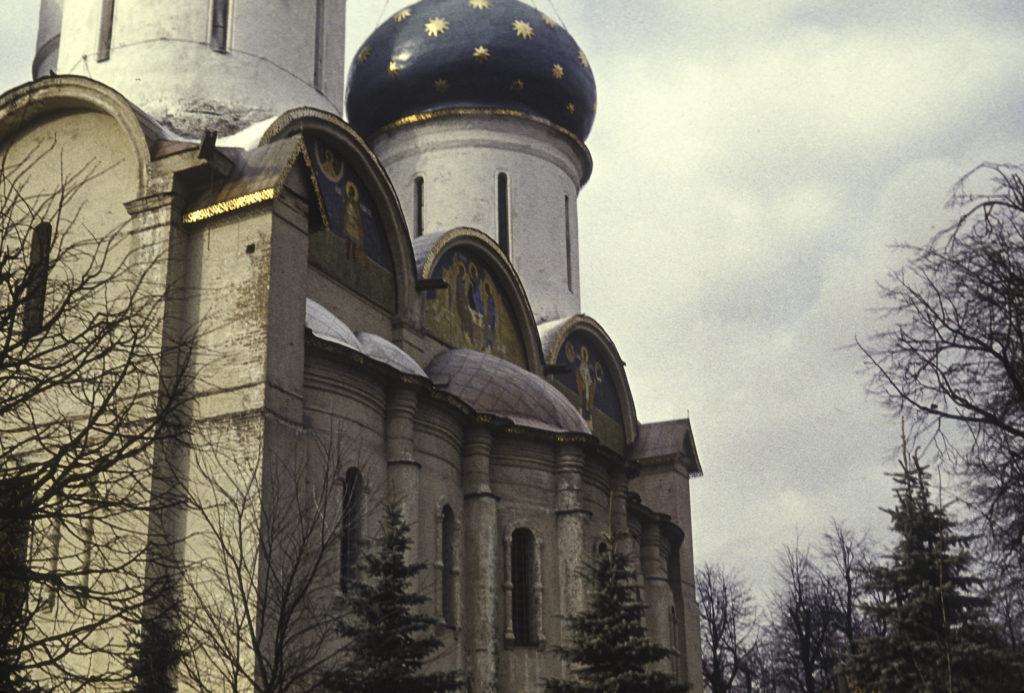
In 1644, monks digging a trench in connection with repairs being made to the southwest corner of the Uspensky Sobor unexpectedly found water flowing which, according to legend, was subsequently found to have healing powers. One monk was miraculously healed of blindness, the story goes, while a servant who expressed disbelief was stricken dead. Other miracles followed, and in the late 17th century a chapel was built over the spring in Moscow Baroque style.
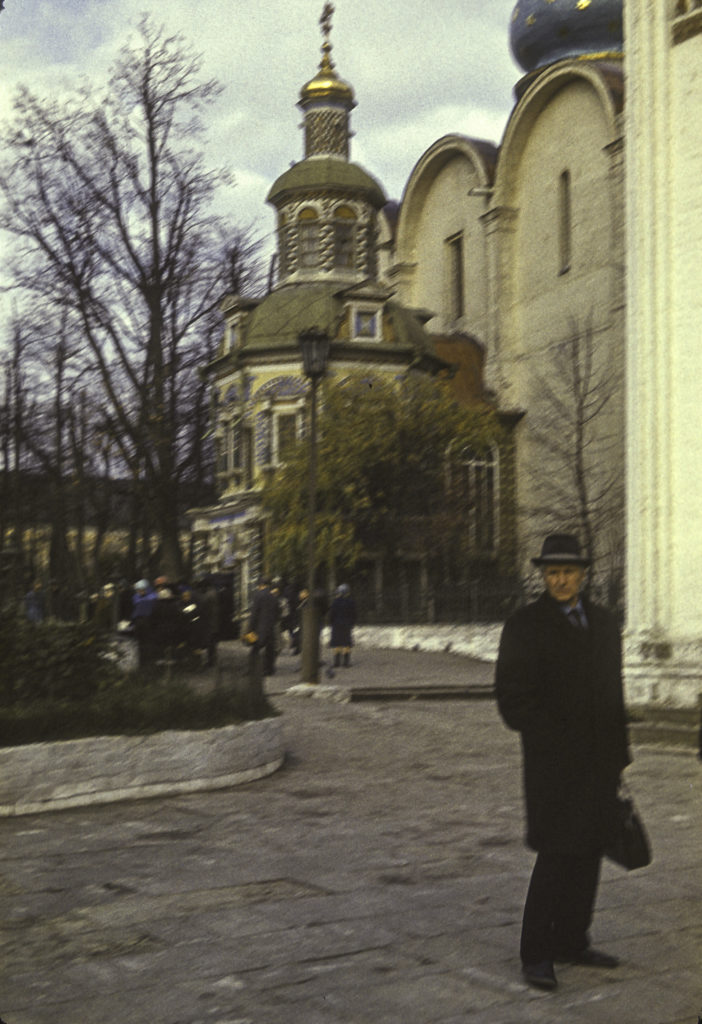
Later, a well was dug near the chapel and a canopy or gazebo was erected over it; a cast-iron cup was provided so that people could draw drinking water from the well. According to one account, when the Bolsheviks closed the monastery in 1920, the gazebo was removed, but restored when Stalin allowed the monastery to be reopened in 1945. In any case, it was there when I visited in 1964.
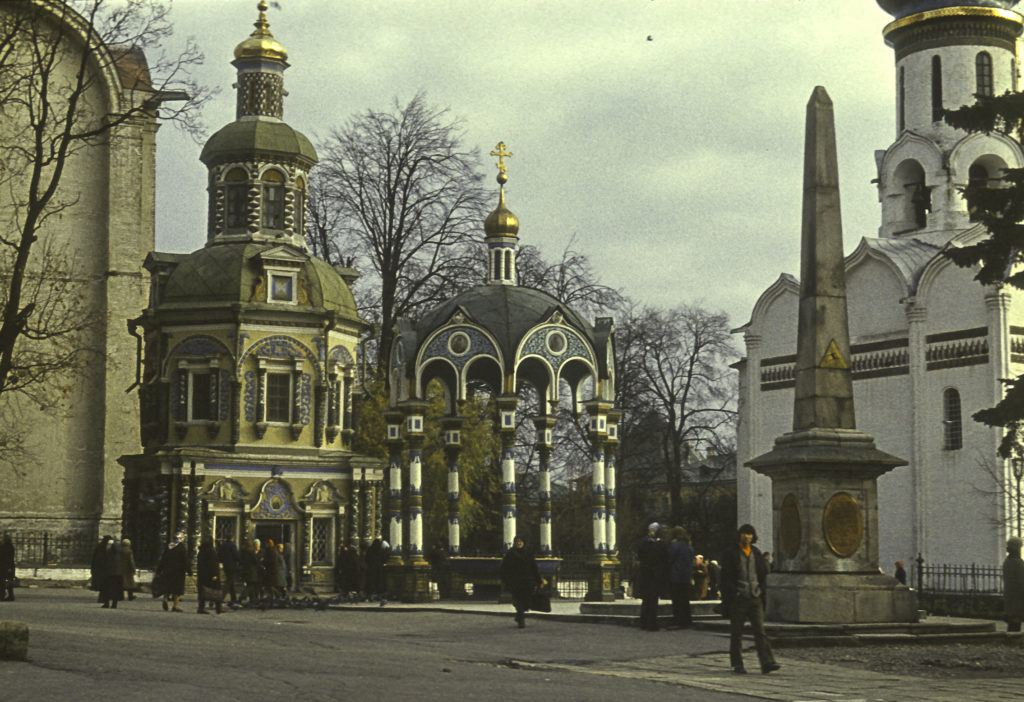
Continuing on, as if moving backward in time, we encountered the Church of the Holy Spirit (Dukhovskaya Tserkov). To build this church, Grand Prince Ivan III invited craftsmen from Pskov; they introduced the use of glazed tiles for decoration. It has a bell tower on top, one of the few surviving Russian churches with this feature; bell towers in Russia are usually separate from the church itself.
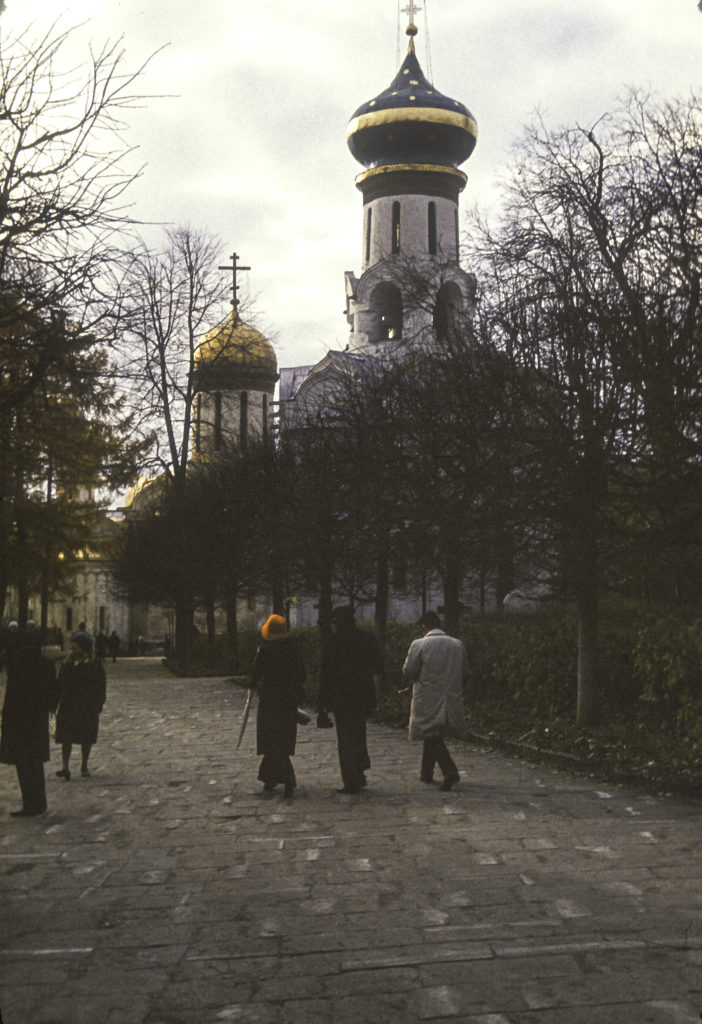
Finally we arrived at the original stone cathedral, the Trinity. In 1389, a fateful battle took place between the forces of the Ottoman Turks and the Serbian army of Prince Lazar, in the aftermath of which the Ottomans absorbed Serbia into their empire. Some Serbian monks, refusing to serve a Muslim ruler, sought refuge in Russia, and made their way to the Trinity-St. Sergius Monastery, where they ended up building the Trinity Cathedral in 1422.
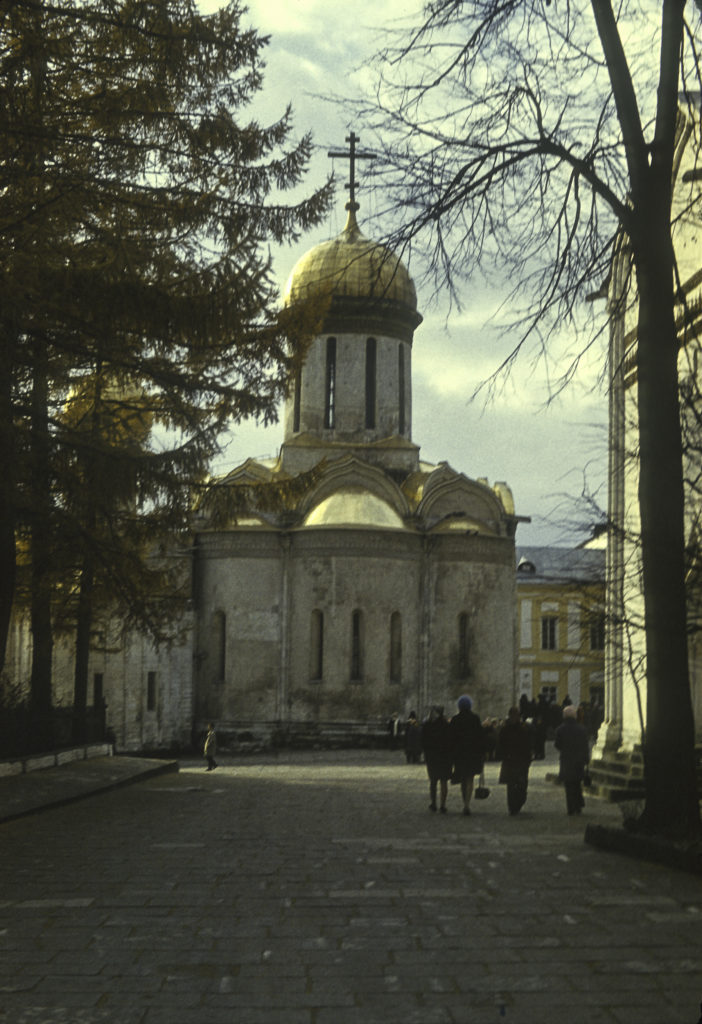
The great Russian icon painters Andrei Rublev and Daniil Chornyi also became involved, contributing their matchless frescoes. The Trinity Cathedral became the final repository of the relics of St. Sergius, who had died in 1392.
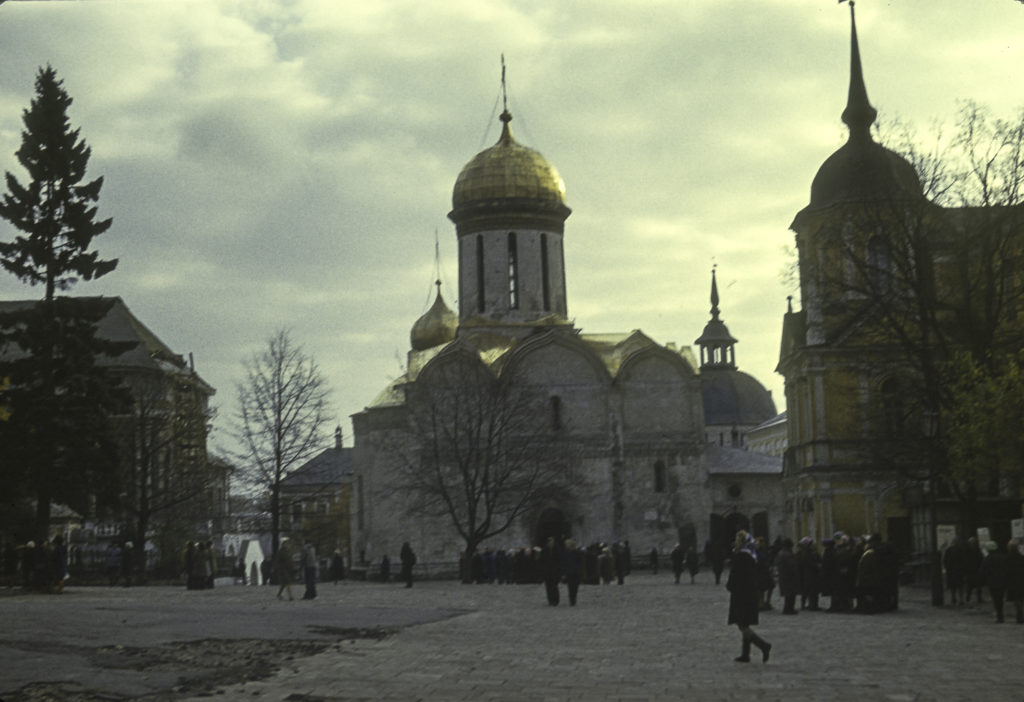
Retracing our steps back past the Uspensky Sobor, we came to the bell-tower. Peter the Great’s daughter Elizabeth, who became Empress of Russia in 1741, greatly favored the monastery and even made annual pilgrimages there on foot. She elevated the monastery to the status of a lavra (premium-grade monastery), and commissioned a baroque bell tower, which however was not completed until 1770. But at 88 meters (288 feet) high, it was taller than the Ivan the Great bell tower in the Kremlin.
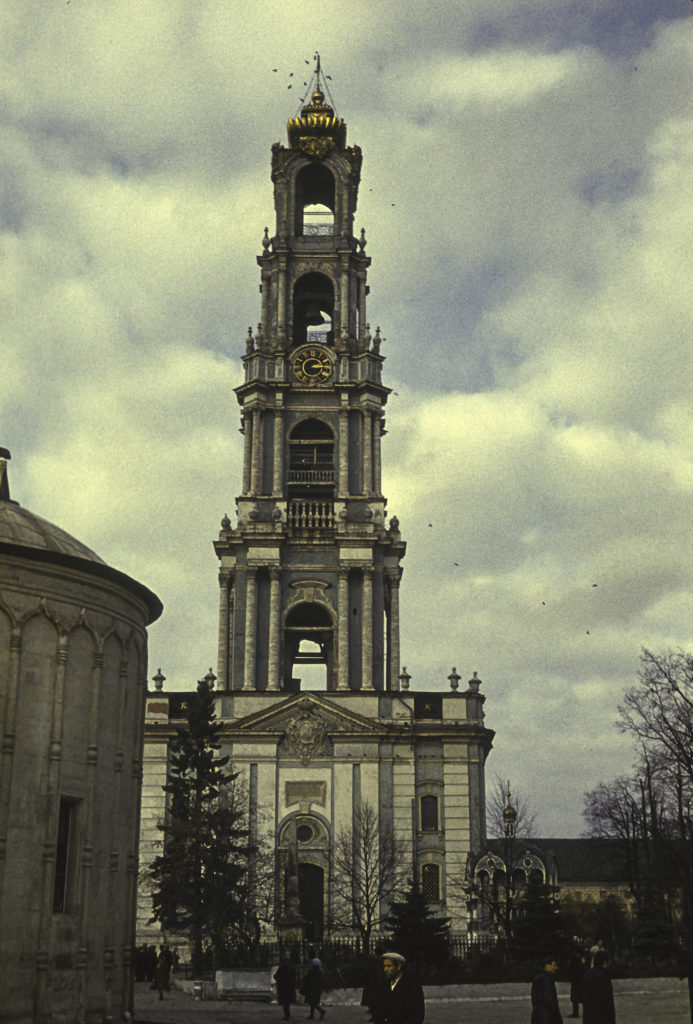
Also added to the monastery during Elizabeth’s reign was the Church of Our Lady of Smolensk, begun in 1746 and completed in 1753. This church was built to house an ostensibly wonder-working stone-carved icon, the original of which is now kept in the Sergiev Posad Historical-Artistic Museum, with a copy substituted for it in the Smolensk Church.
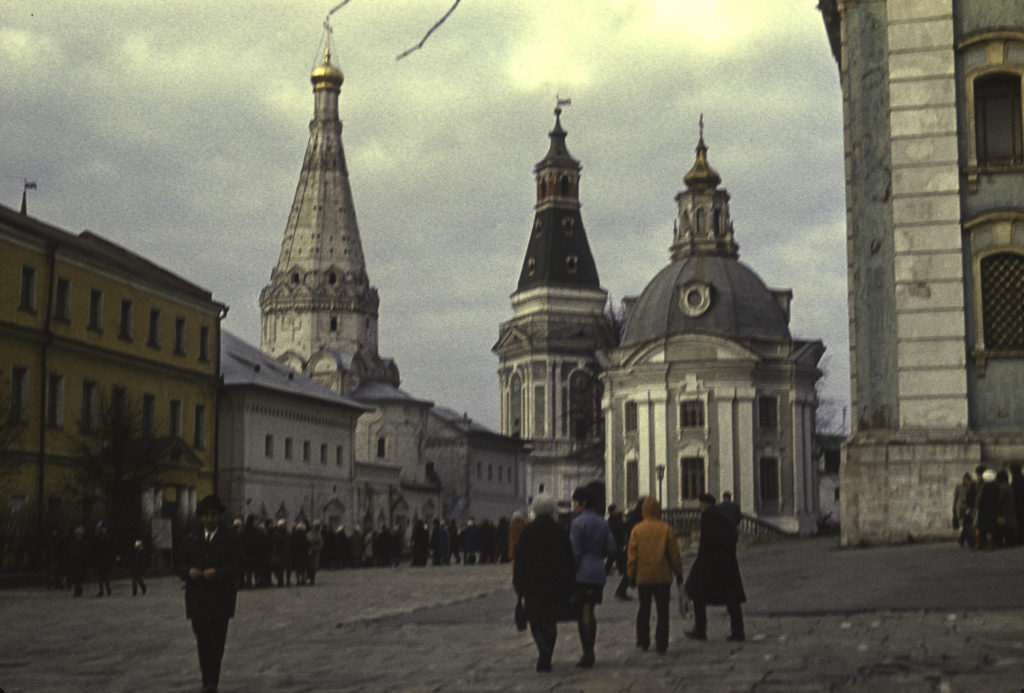
Visible behind and to the left of the Smolensk Church in the picture above is another 18th-century addition, the Kalichya Tower, on the northern wall of the monastery. This was completed around the same time as the Bell Tower and resembles it in architectural style and many details. The green tiles covering the roof were added later, in 1793, and are a feature shared with the Troitskaya Tower of the Kremlin. Like the Utochya Tower, it is a gated tower.
There is a third structure in the picture above, which also shows up in the center of the next photo. This is the tent church of Zosima and Savvaty, built in 1635-37, oddly enough on the top of the monastery hospital building. It was named for two of the founders of the Solovetsky Monastery on islands in the White Sea in the far north of Russia. Unfortunately, it leaves out the person who was mostly responsible for the establishment of the church, the Cellarer (Master of Provisions) Alexander, who migrated from the Solovetsky monastery after the Time of Troubles and worked tirelessly over the decades following to repair the destruction wrought by the Polish sieges and other disorders of that grim era.
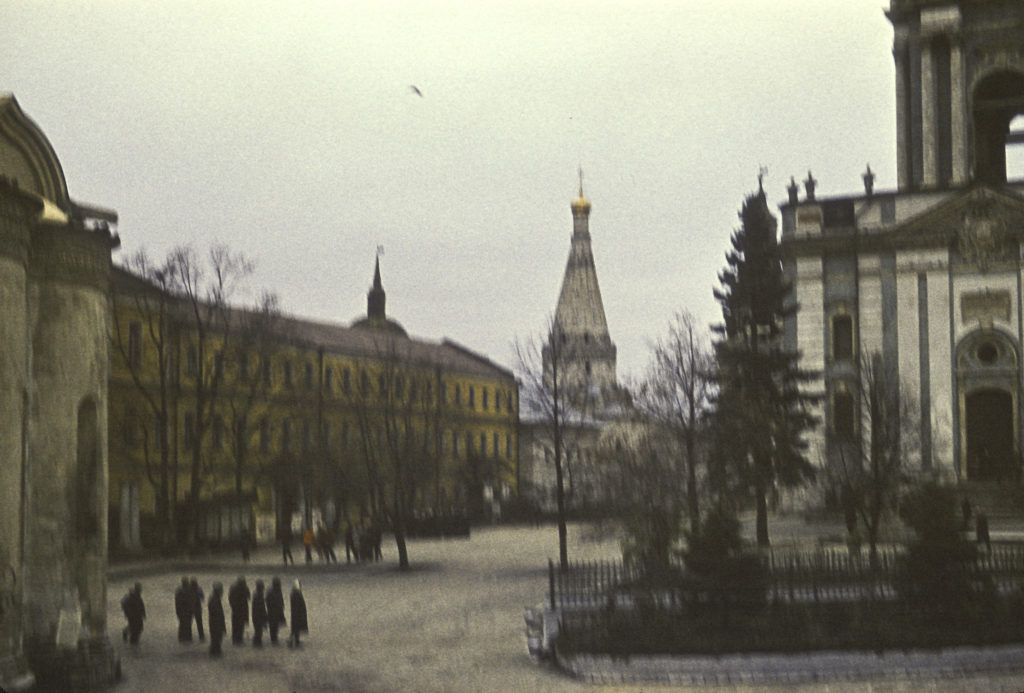
As I already mentioned, the Soviet regime shut down Trinity-St. Sergius Monastery in 1920, distributing its buildings among various government agencies or turning them into museums. The Soviets also removed many of the valuables and especially the bells. However, the sacristy collections and the relics of St. Sergius were saved, largely through the efforts of Pavel Florensky, an Orthodox priest and theologian as well as a mathematician and electrical engineer, who after the 1917 Revolution had worked for the Soviet government as an electrical engineer. For these crimes, as well as others such as publishing a monograph on geometry in which he drew a religious link to imaginary numbers, and being recommended for a job by Leon Trotsky, he was arrested and eventually executed in 1937.
During World War II, the Soviet government made some gestures in the way of improving relations with the Orthodox church, culminating in the return of the Trinity-St. Sergius Monastery to the church in 1945 and the resumption of services in the Assumption Cathedral in 1946.
